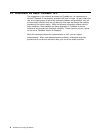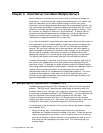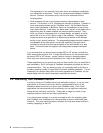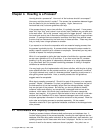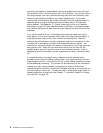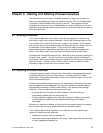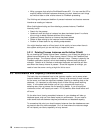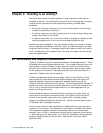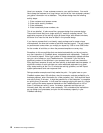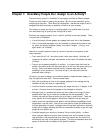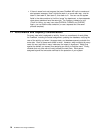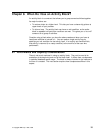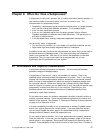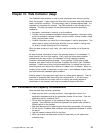Here is an example. A new customer comes to your retail business. You would
like to keep the customer for a long time so, as part of the “new customer process,”
you gather information into a database. The process design has the following
activity steps:
1. Enter customer and spouse names
2. Enter social security numbers
3. Enter addresses
4. Enter home/work phone numbers, etc.
This is too detailed. It looks more like a program design than process design.
There would more likely be a single activity to "create a customer record." The
application program for the activity might do those things, with different windows,
but there is no need for that level of detail in the process design.
If you have a process that is not heavily used, perhaps one for some unique
circumstances, the size and number of activities has less impact. The real impact
on performance comes when you multiply an aspect by 1000 or even 5000 times
for the number of activities, or when the process template runs every day.
Exceptions to this are activities that are started automatically and do not require
any user interaction (in FlowMark terms, autostarted and unattended). These will
run at machine speed. But a high number of these automatically started activities
can put a lot of stress on your FlowMark server. Be careful if you find that a
significant number of the activities in your process have no real user interaction.
Even significant amounts of work are done quickly at dedicated machine speeds. A
significant number of such activities can cause workloads equivalent to a great
many users working at the 5 to 10 minutes per activity guideline, and will impact
system performance and user response time.
Perhaps another example would help make the point. If a typical user on your
FlowMark system does 100 activities a day (for example, evaluate profitability of a
business proposal, enter information for a new customer, etc.), that would be about
one activity every 5 minutes. It might be possible for a “fast computer” to complete
an activity every 3 seconds. In that case the computer playing the part of a “single
user” could put the same resource demands on the FlowMark server as 100 of
those “5 minutes per activity” users. As always, automatic activities are not
inherently bad; they are useful, even necessary. But understand the implications
as you design your processes, and plan for the necessary capacity in your
FlowMark server(s).
12 FlowMark V2.3 Design Guidelines



